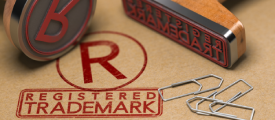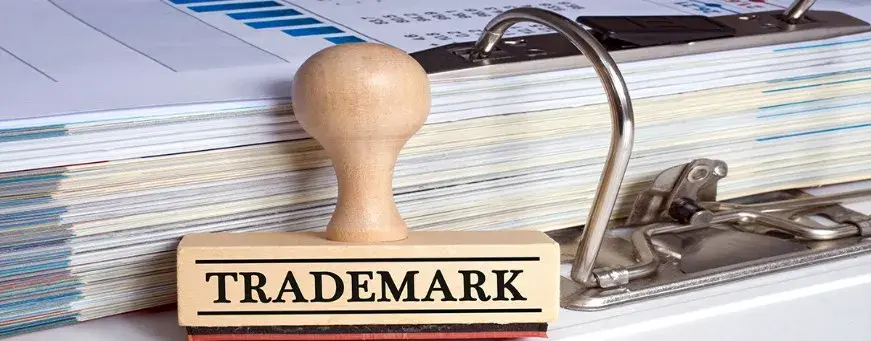TRADEMARKS FILING AND PROSECUTION IN EUROPE UNION
A trademark is a distinctive sign or indicator used by an individual, business organization, or other legal entity to help consumers indentify that its products or services with which the trademark appears originate from a unique source, and to help distinguish its products or services from those of other entities.
A trademark is typically a name, word, phrase, logo, symbol, design, image, or a combination of these elements. There is also a range of non-conventional trademarks comprising marks which do not fall into these standards categories, such as those based on colour, smell, or sound.
A trademark provides protection to the owner of the mark by ensuring the exclusive right to use it to identify goods or services, or to authorize another to use it in return for payment. Trademark protection also hinders the efforts of unfair competitors, such as counterfeiters, to use similar distinctive signs to market inferior or different products or services.
The owner of the registered trademark may initiate legal proceedings for trademark infringement to prevent unauthorized use of that trademark[1]. It is mentioned in the ninth recital in the preamble of the EUTMR that no right will be obtained without registration. However, protection to the unregistered trademark is available at national level only.[2]
Trademarks in Europe may be designated by the following symbol:
- ® (for a registered trademark)
- the EU trademark number can also be indicated next to your trademark[3]
| Relevant office | European Union Intellectual property office (EUIPO) |
| Nice classification | Yes (Ninth edition) |
| Paris convention | Yes |
| Madrid system | Yes |
| Multi-class system | Yes |
| Documents required for filing a trade mark application | No documents required only the name and address of the individual or company who will be the owner of the mark, the trademark name and logo, classes and the corresponding products and/or services.[4] |
| Prosecution process | Filing publication of mark in the trademark journal opposition period(three months after a trademark has been published) registration renewal[5] |
| Registration term | 10 years |
| Renewal term | 10 years |
Trademark searches in European Union
It is advisable to conduct a trademark search prior to filing a trademark application to ascertain the availability of trademarks, existence of prior identical/similar marks on the register etc., so as to avoid any objection and opposition with respect to the mark.[6]
A trademark search in Europe can be conducted for word marks, device marks, numeral and labels. An official search can be conducted at the records of EUIPO, you can search for the registered trademarks using eSearch plus which initially provides access to the databases of the European Union trademarks. By using this you can easily find out if the certain mark is registered within the Europe or not. There is also option available for the image searches, image monitoring, find a representative, or search the Bulletin.[7]
Trademark word search edition of European Union follows the Nice Classification and trademark applications can be filed for goods in classes 1-34 and services in classes 35-45. Trademark searches in European Union can be conducted for the desired class and associated classes.
It is advisable to conduct comprehensive trademark clearance search in European Union to ascertain availability of the proposed mark and also to overcome any objection and opposition with respect to mark later on.
Along with trademark search, it is also advisable to do a comprehensive company search and domain search of the proposed trademark in European Union. It is advisable to conduct a comprehensive search for a figuration trademark. The device marks include individual marks such as stylized letters, numerals, shapes, plants, celestial bodies, living creatures etc. or combination of marks containing device marks. A device mark search in European Union can be conducted amongst the marks filed and registered as per the Vienna code classification.[8]
Filing trademark application in European Union
A person may file multi-class or single class trademark applications in European Union.
Trademark application can be filed in the following categories:
- Ordinary Applications
- Convention application (claiming priority from a convention country)
Ordinary trademark applications in European Union:
Ordinary trademark applications filed in European Union are applications without claiming any priority. Ordinary trademark application can be Online through the official EUIPO website. There are three options available for filing the ordinary application on website, first is “Easy filing form” which is designed for SMEs and individuals within the European Economic Area, without a legal representative, second is “Five step form” for IP experts handling straightforward cases, third is “Advanced form” for IP experts handling complex cases.[9] Multi class trademark applications may also be filed in European Union. However, the trademarks act also lays down provisions regarding the filing of priority applications, wherein priority of the mark can be claimed in the said mark filed in a convention country.
Priority trademark applications in European Union/Convention trademark applications European Union:
A priority trademark application may be filed in European Union. A priority trademark application should be filed in European Union within 6 months after the date on which the application was made in the convention country.[10]
Paris Convention
The Paris Convention for the Protection of Industrial Property, signed in Paris, France, on March 20, 1883, established a Union for the protection of industrial property. It offers national treatment to the applicant residing in the member country of the union, in other words. National treatment is a very important concept and is essential for successfully achieving the fundamental aim of the Paris Convention. The idea is to provide equal treatment to applications from member countries, in a given member country and not to differentiate between the nationals of member countries for the purpose of grant, and protection of industrial property. Priority application can be filed in European Union within six months of after the date on which the application was made in the Convention Countries.
Trademark classes for goods and services
In the European Union trademark application, the nice classification is a system used for classifying goods and services. It consists of 45 classes. Classes 1 to 34 are assigned for goods and classes 35 to 45 are assigned to services. Each class contains a set of terms to better define the goods and services in respective classes protected by EU trademark application.
It is to be noted that the original lists of goods and services included in EU trademark application can only be limited not extendable. You cannot add goods, services and classes to the application as originally filed.
A person may file multi-class or single class trademark applications in European Union. The fee for only one class as covered by the application is 850€.[11]
Trademark Examination in European Union
If an error is detected or the objection is raised it will be communicated to your user area and you will be given a two months time to remedy any deficiencies and reply. A person can ask for additional two months extension of time to prepare your response. Usually a first extension is granted automatically but justification is required for the second extension.
In case no objection is raised, the trademark will be published in 23 EU official languages. This means that it will be made public that the said mark has been applied and for the respective goods and/or services.[12]
Trademark opposition in European Union
After the successful completion of the examination period, the trademark is accepted and published. From the date of publication onwards, third parties who believe that the trademark should not be registered have three months time to object the application by filing a notice of opposition.
EUIPO has provided a “cooling off” period which is of two months for the parties to negotiate and settle the dispute. This term can be extendable up to 22 months in case both the parties agree. If the parties decides not to negotiate settlement, then once the cooling period is over the opponent is given a two months time to submit any evidence and legal arguments in support of their claim.
The applicant is given two months time to provide evidence and arguments in support of their claims. After this a two months time is given to the opponent to file in reply to any arguments presented by the applicant but no new evidence can be submitted at this stage.[13]
Trademark registration in European Union
The application shall proceed to registration where there is no opposition or where the opposition was filed and was decided in favor of the applicant. The mark is registered for a period of 10 years from date of filing of the registration and the registration certificate is issued.
[1] https://ssrana.in/global-ip/international-trademark-filing-registration/trademarks-in-united-states/
[2] https://www.lexology.com/library/detail.aspx?g=f95dbc62-fa6a-4c87-a185-1b9638289588
[3] https://euipo.europa.eu/ohimportal/en/trade-marks-once-registered
[4] https://igerent.com/trademark-registration-european-union
[5] https://euipo.europa.eu/ohimportal/en/registration-process
[6] https://ssrana.in/global-ip/international-trademark-filing-registration/trademarks-in-united-states/
[7] https://euipo.europa.eu/ohimportal/en/search-availability
[8] https://ssrana.in/global-ip/international-trademark-filing-registration/trademarks-in-united-states/
[9] https://euipo.europa.eu/ohimportal/en/apply-now
[10] https://www.boult.com/wp-content/uploads/2016/03/Boult-EuropeanUnion-Trade-Mark-Application.pdf
[11] https://euipo.europa.eu/ohimportal/en/nice-classification
[12] https://euipo.europa.eu/ohimportal/en/registration-process
[13] https://euipo.europa.eu/ohimportal/en/web/guest/trade-marks








